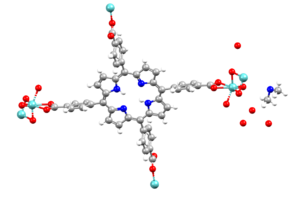The Cambridge Crystallographic Data Centre (CCDC) has made around 10,000 metal—organic framework structures free to academics in the new CSD MOF Collection. This has been announced in a letter in Matter. "We have seen incredible growth in the number and variety of MOFs synthesised and over the past 50 years, and now the variety of applications is growing too. We hope that access to this data collection will support research in this important field." said Seth Wiggin, Senior Scientific Editor at the CCDC. The CSD MOF Collection includes the crystal structure data for 10,636 MOFs from the Cambridge Structural Database (CSD). In order to make the data more ready for computational calculations, the structures have been simplified to space group P1 and all guests have been stripped out to leave just the framework itself. The data is provided as single-block CIF files along with CSV indexes, allowing researchers to search and view the structures, or apply analytical or learning techniques to the data. The collection has been built to provide a simplified and focused data set for computational research including just the 3D porous frameworks, rather than the complete collection of 107,980 MOFs in the full CSD with all the user-led filtering options available in the CSD Software Portfolio. To build the collection, the CCDC worked with researchers at the University of Cambridge Department of Chemical Engineering and Biotechnology. Here the molecular mechanisms and applications surrounding porous materials like MOFs are researched, including their use in drug delivery systems, hydrogen storage and carbon capture. "It's great to see experimentally derived structures from the CSD made available for free in this MOF collection." said Dr David Fairen-Jimenez, who leads the Adsorption and Advanced Materials lab there. "The potential of MOFs is still being explored in a wide range of applications - and having this trusted data freely available will help to advance work further." Indeed reports estimate that the global MOF market will grow by around 34% from 2021 to 2026, with big industry players like BASF and Strem Chemicals active in R&D. As this industry interest grows, fundamental research to understand properties, mechanisms and emerging applications of MOFs will be of increasing importance. The CSD MOF Collection is available to download now from www.ccdc.cam.ac.uk.

